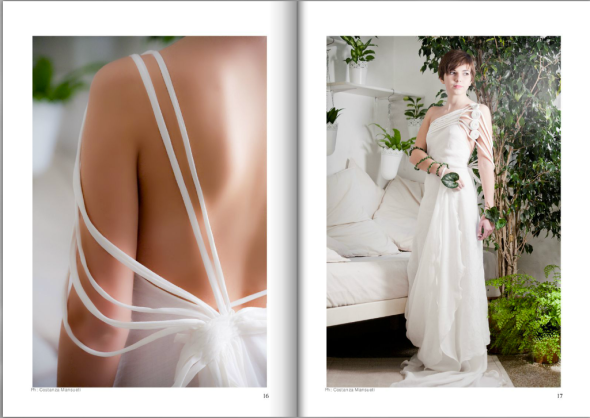Bridal Wedding Dresses Biography
source(google.com.pk)
Callie has been in love with fashion since her days as a young girl growing up in Melbourne, Australia. Her favorite game of dress-up involved pulling out her Mum’s sixties- and seventies-era evening clothes, and modeling her favorite ensembles. She has marked important or special events in her life through the evolution of her wardrobe — from her first pair of high heels, her first ballgown, prom dress, and — of course — her wedding gown.An appreciation for the impact fashion makes on our lives inspired Callie to study Fashion Design at the Royal Melbourne Institute of Technology. And she loved every minute of her time there. Upon graduation, she honed her design skills in women’s and children’s wear for various Australian companies, eventually landing her a position designing wedding gowns. Callie discovered she had a special talent for creating memorable gowns, and fell in love with bridal design.
Modern Trousseau’s couture designs are the ultimate in creativity and construction. Callie loves the luxury of working with fine French and Italian laces, imported silks, and delicate beadwork, and takes great care in selecting the fabrics that bring her 2-dimensional sketches to life. When the perfect fabric cannot be located, Callie will design the intricate lace patterns and unique beadwork for production in the finest ateliers.
Nothing less than perfect is the standard Callie Tein sets for the Modern Trousseau line of bridal gowns and mother of the occasion dresses. This originates from her belief that one’s wedding day is one of the most special days of a woman’s life, and the bride should remember herself looking and feeling gorgeous. Ultimately, a Modern Trousseau gown by Callie Tein is a one-of-a-kind, wearable works of art created to mark that very special moment when a woman becomes a bride.
The indigenous peoples of the Americas have varying traditions related to weddings and thus wedding dresses. A Hopi bride traditionally would have her garments woven by the groom and any men in the village who wished to participate. The garments consisted of a large belt, two all-white wedding robes, a white wedding robe with red stripes at top and bottom, white buckskin leggings and moccasins, a string for tying the hair, and a reed mat in which to wrap the outfit. This outfit also would serve as a shroud, since these garments would be necessary for the trip through the underworld.
A Pueblo bride wore a cotton garment tied above the right shoulder, secured with a belt around the waist.
In the traditions of the Delaware, a bride would wear a knee-length skirt of deerskin and a band of wampum beads around her forehead. Except for fine beads or shell necklaces, the body would be bare from the waist up. If it were a winter wedding, she would wear deerskin leggings and moccasins and a robe of turkey feathers. Her face would be painted with white, red and yellow clay.
The tribes of Northern California (which include the Klamath, the Modoc and the Yurok) had a traditional bridal dress woven in symbolic colors: white for the east, blue for the south, yellow (orange) for the west; and black for the north. Turquoise and silver jewelry were worn by both the bride and the groom in addition to a silver concho belt. Jewelry was considered a shield against evils including hunger, poverty and bad luck.
Bridal Wedding Dresses


Bridal Wedding Dresses


Bridal Wedding Dresses


Bridal Wedding Dresses


Bridal Wedding Dresses


Bridal Wedding Dresses


Bridal Wedding Dresses


Bridal Wedding Dresses


Bridal Wedding Dresses


Bridal Wedding Dresses


No comments:
Post a Comment